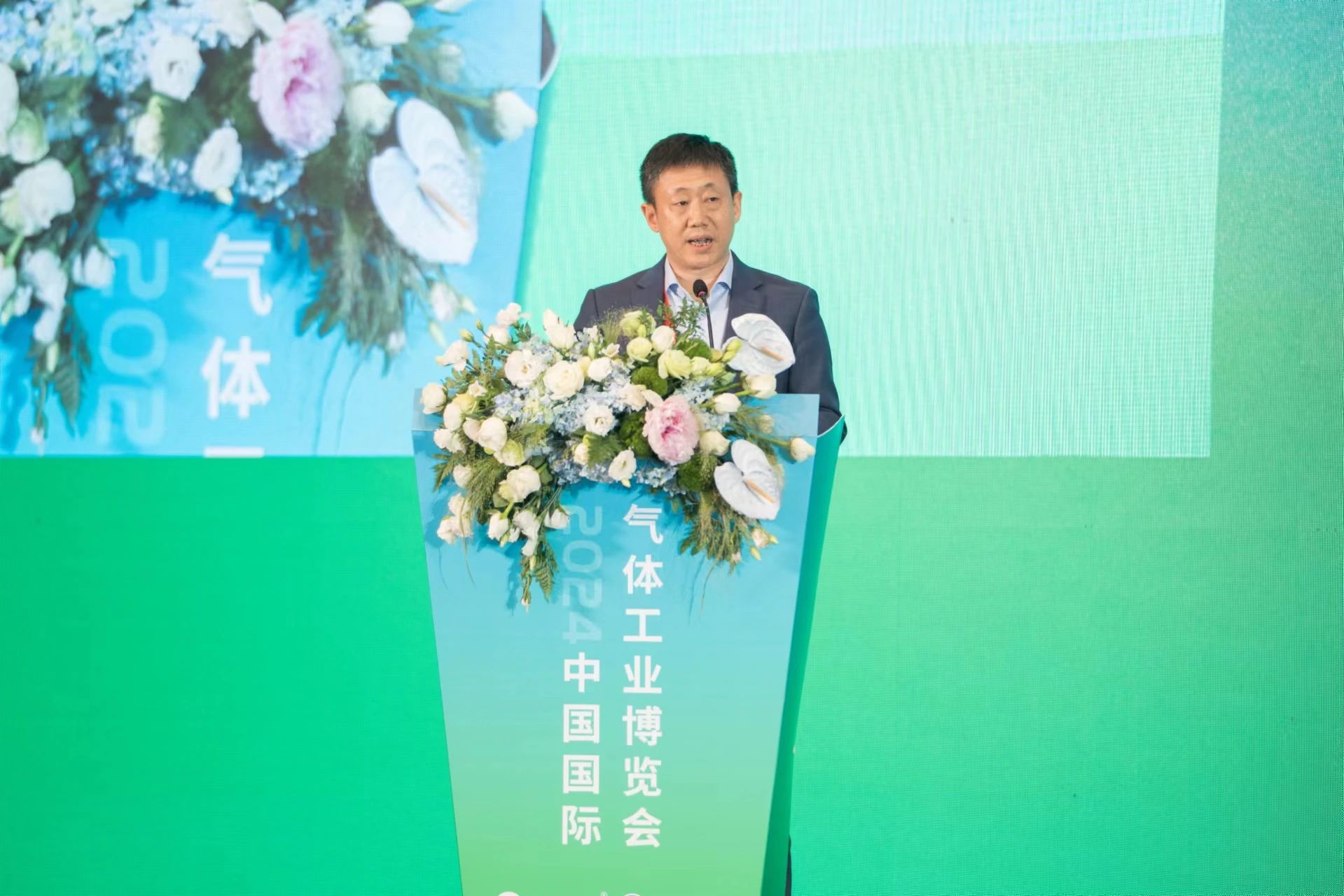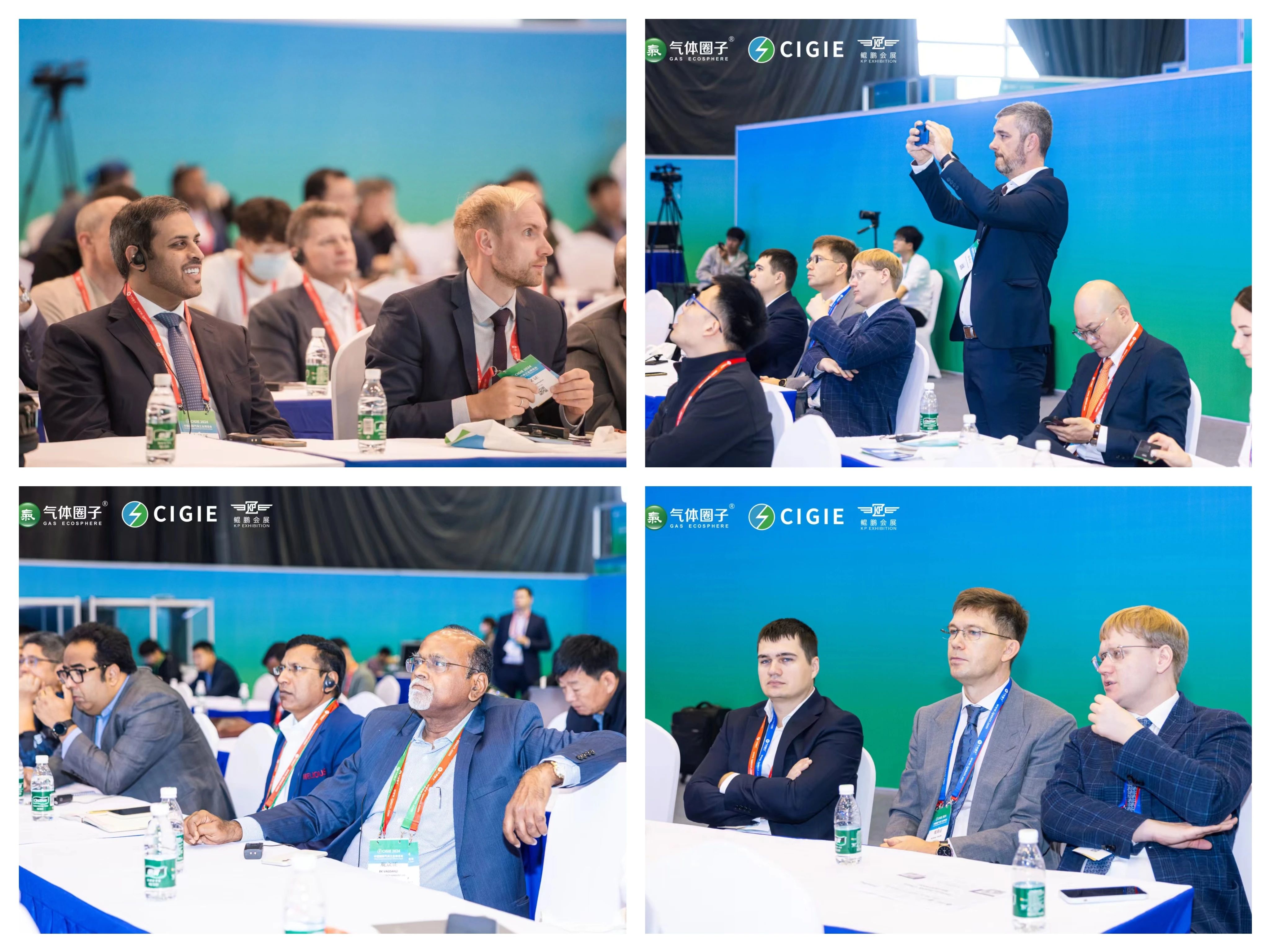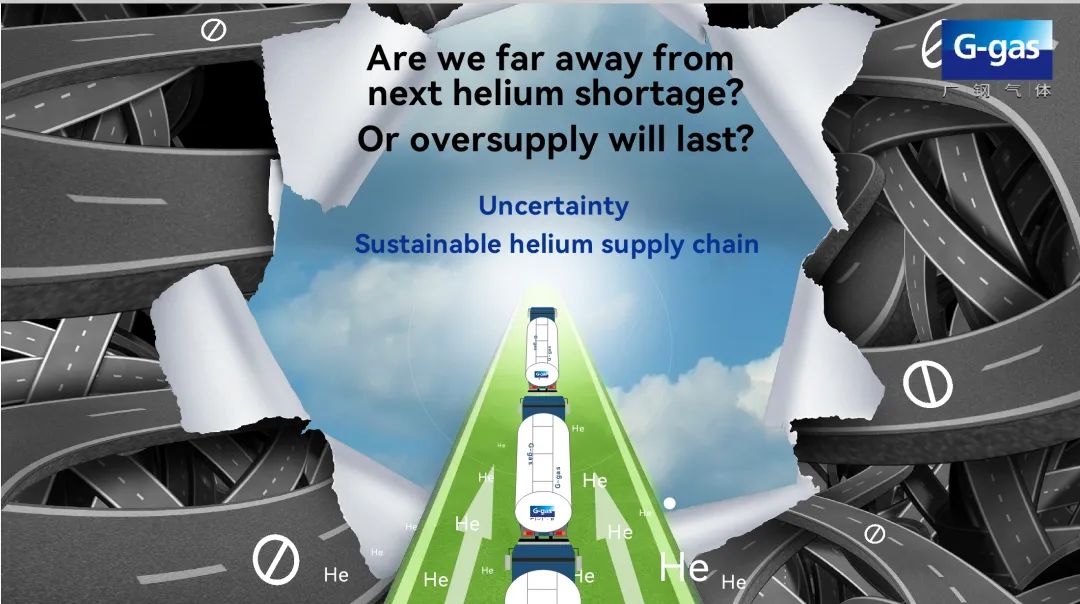15 April 2026, Wednesday 09:00-17:00
16 April 2026, Thursday 09:00-17:00
17 April 2026, Friday 09:00-15:00
On April 18 2024, representatives of helium industry players from nearly 30 countries around the world gathered in Wuxi, China, to participate in the Asia Pacific Helium Conference 2024, which was hosted by Gas Ecosphere with title sponsored by G-gas. This is the first global helium conference held in China. Tom Deng, the Chairman and President of G-gas, delivered the keynote speech: From Chaos to Order – Back to a Sustainable Value Chain.
“China’s helium market experienced a significant change from shortage to ample supply in a period of 5 months. We are here today to discuss how to bring the helium industry from chaos to order.”Tom Deng said.

The annual global demand of Helium is around 6000 million cubic feet. In China mainland, the current market size is approximately 500 million USD. It is even less than 2% of the total industrial gas market. This is a niche market. 80% of the global helium demand is generated by 20% of the customers. It is clear that the helium customer base is not that huge. However, it is shocking to see, in China, the number of helium sellers is far more than the number of customers nowadays. Why there are so many people flooding into this niche market?
Many people may think that it is high profit brings people to this industry. However, instead of focusing on profit, we should put our focus on Risk, Responsibility, Reliability and some Rewards, the “4Rs” mentioned by Tom. That is to say, to take the risk of the vulnerable global supply chain, to be responsible for the take-or-pay obligations to helium source, to be a reliable supplier to all of our customers even during shortage, eventually to get some reasonable rewards in a longer term.
Helium is a product bundled with other industrial gases by nature, as a part of an integrated total gas solution. It is a long-term commitment, instead of a one-off trading, both to the helium refineries and to the end-users.
In order to fulfill this long-term commitment to both upstream suppliers and downstream end-used, G-gas has invested significantly on Helium ISO container fleet, to become a trusted gas partner to suppliers and customers. The management of these containers and the dedicated supply chain requires unique capabilities and expertise that gas companies developed over decades.
For example, how to deal with a high pressure tank while it is on the ocean? How to avoid leakage under different circumstances? How to balance the cost and efficiency during holiday season, to avoid leakage and secure the supply to customers at the same time? How to meet a demanding semiconductor customer’s stringent onsite requirements? Solving these issues requires industry knowledge and experience, which cannot gain over night or by hiring one or 2 people. Any wrong answer to these questions will cost you a fortune.

How to deal with the uncertainty?
There were 4 times of global helium shortages from 2006 to 2024. Lack of flexibility in demand, long distance transportation from refinery to end users, and difficulty in storage make the helium supply chain very delicate and vulnerable. Look back to the history, the occurrence of each shortage was not simply caused by lack of helium in the planet. It is the supply chain disruption at some point: for example, a major shutdown of a helium plant, port congestion or blockade in one nation, and global pandemic, etc.
The recent commissioning of the Russia plants allowed China to recover from the Helium shortage 4.0. Also, there are plenty of projects undergoing in US, Qatar, and other North American regions. Does it mean that we are far away from the next helium shortage or we will always be in the status of oversupply? It is full of uncertainty, especially under current complicated geopolitical and market environment.

China is a country with very limited production of Helium. How should we deal with the uncertainty of the helium industry? “The one who can cope with the future helium shortage or oversupply is the one who has a sustainable helium supply chain. A sustainable supply chain includes diversified sources, sufficient container fleet, a professional team, a reliable global network, and a loyal customer group.” expressed by Tom.
Prosperities will eventually fade away, and the wise marches forward.
Helium business is all about supply chain management. The supply chain is also the value chain. All the stakeholders which include Helium refinery, Tier 1 players, Tier 2 players, and local distributors all have their own and unique value and role in this chain. For a long time, the vulnerable supply chain is sustained by the collaboration of these stakeholders, to deliver value to the end-users globally.
Now, there are more players than ever among the supply chain, but it doesn’t make the supply chain stronger. It is chaos. This niche market is getting too crowded, and most of the players are suffering from this chaos. The involutions among different tiers of the players, causes anxiety among end-users and harming the interest of the industry players.
“Helium is not a product for one-off trading. It shall be managed sustainably in a competitive environment. Each stakeholders should collaborate, to deliver value to the end-users. To bring the chaos to order and back to a sustainable value chain, in this way, we are creating value for the industry.”Tom Deng said.